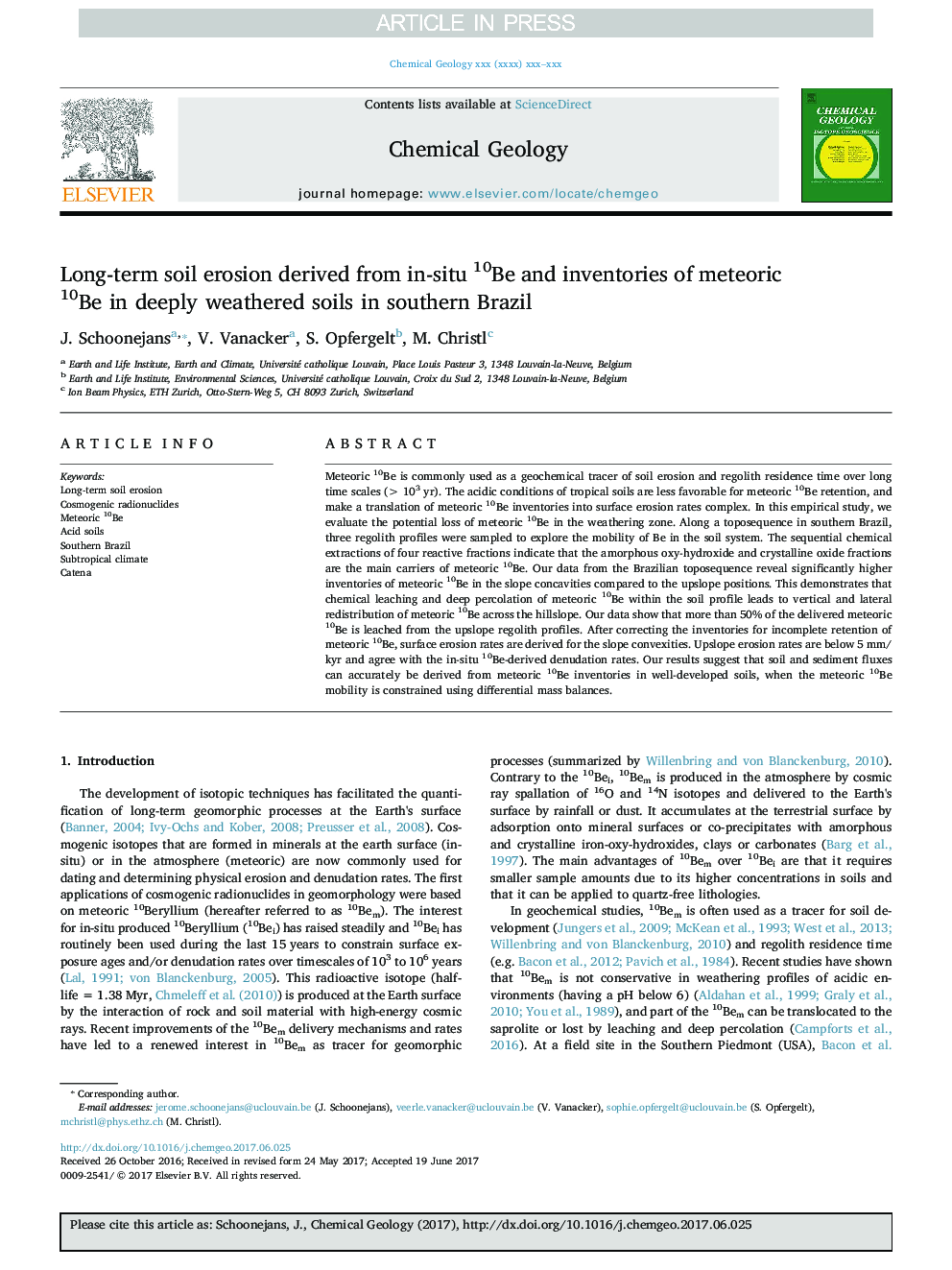| Article ID | Journal | Published Year | Pages | File Type |
|---|---|---|---|---|
| 5782842 | Chemical Geology | 2017 | 9 Pages |
Abstract
Meteoric 10Be is commonly used as a geochemical tracer of soil erosion and regolith residence time over long time scales (>Â 103Â yr). The acidic conditions of tropical soils are less favorable for meteoric 10Be retention, and make a translation of meteoric 10Be inventories into surface erosion rates complex. In this empirical study, we evaluate the potential loss of meteoric 10Be in the weathering zone. Along a toposequence in southern Brazil, three regolith profiles were sampled to explore the mobility of Be in the soil system. The sequential chemical extractions of four reactive fractions indicate that the amorphous oxy-hydroxide and crystalline oxide fractions are the main carriers of meteoric 10Be. Our data from the Brazilian toposequence reveal significantly higher inventories of meteoric 10Be in the slope concavities compared to the upslope positions. This demonstrates that chemical leaching and deep percolation of meteoric 10Be within the soil profile leads to vertical and lateral redistribution of meteoric 10Be across the hillslope. Our data show that more than 50% of the delivered meteoric 10Be is leached from the upslope regolith profiles. After correcting the inventories for incomplete retention of meteoric 10Be, surface erosion rates are derived for the slope convexities. Upslope erosion rates are below 5Â mm/kyr and agree with the in-situ 10Be-derived denudation rates. Our results suggest that soil and sediment fluxes can accurately be derived from meteoric 10Be inventories in well-developed soils, when the meteoric 10Be mobility is constrained using differential mass balances.
Related Topics
Physical Sciences and Engineering
Earth and Planetary Sciences
Geochemistry and Petrology
Authors
J. Schoonejans, V. Vanacker, S. Opfergelt, M. Christl,
